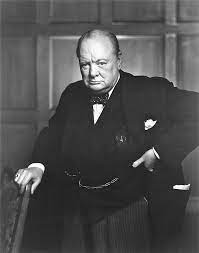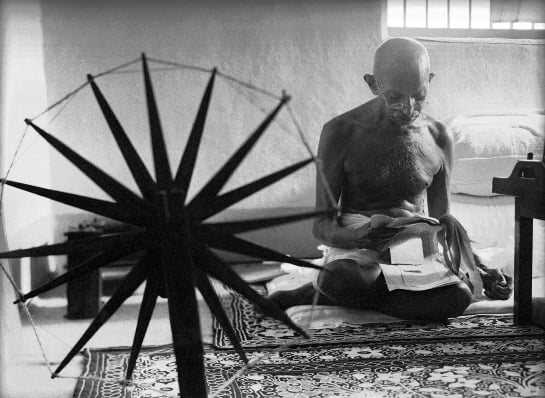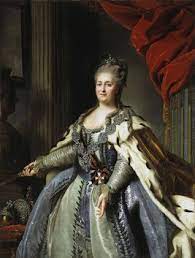Conversation 41: Remote understanding of a leader's personality and motives, whether according to the literature or according to the "directory of characters"
Greetings to our dear readers.
Let's start with the question of what is personality?
To that end, we will first quote the article by Blais and his friends from 2021.
Julie Blais, Philip G. Chen, Scott Pruysers. Editorial: Political Psychology: The Role of Personality in Politics. editorial article; Front. Polit. Sci., 21 July 2021.
"Although there is no single definition accepted by all personality theorists, we can say that personality is a pattern of relatively fixed traits and unique characteristics that give both consistency and individuality to a person's behavior."
Perhaps, the most common way to study personality has been through the trait approach. Traits, or tendencies, refer to the internal characteristics of a person, which are fairly stable over time and between situations, and help explain differences between people. Today there are several different models that help organize different personality traits, with the FIVE FACTORS MODEL: (FFM; McCrae and Costa, 1987) being the most prominent.
The FFM includes traits of extraversion (e.g., sociability, assertiveness, and thrill-seeking), agreeableness (e.g., trust, modesty, warmth), conscientiousness (e.g., competence, self-discipline, and achievement), neuroticism (e.g., anxiety, irritability, and vulnerability), and openness to experience (eg, unconventional ideas, fantasy, and values). A competing model, HEXACO [Honesty, Humility, Emotionality, Extraversion, Agreeableness, Conscientiousness, and Openness] (Ashton and Lee, 2007), similarly includes traits of extraversion, conscientiousness, and openness; However, HEXACO redefines agreeableness (e.g., forgiveness, gentleness, and patience) and neuroticism (renamed emotional stability) while adding the sixth trait of honesty-humility (e.g., fairness, avoidance of greed, modesty).
In contrast to these general traits, the Dark Trinity model (Paulhus and Williams, 2002) defines the three more traits of psychopathy (e.g., rigidity, impulsivity, antagonism), narcissism (e.g., self-aggrandizement, antagonism), and Machiavellianism (e.g., manipulation, planning, antagonism). While other individual traits (eg, authoritarianism, sadism, etc.) and other models (eg, Light Triad) exist, FFM, HEXACO, and Dark Triad tend to be the most common.

Board of Directors: Photographed by courtesy of Shimshony Sarit
Why is personality important?
At least part of the reason for the enduring legacy of personality research is its ability to explain important behavioral outcomes. Individual differences in traits from the FFM, for example, have been linked to health and illness-related outcomes, academic achievement, relationship satisfaction, and overall life expectancy. Recently, personality has also been identified as an important consideration when studying political behavior. Instead of reinventing personality constructs, these researchers drew on existing trait models of personality and applied them to a variety of political outcomes and attitudes, including political participation, political interest, vote choice, political ideology, political ambition, trust, and understanding the behavior of politicians and leaders.
As a general rule, investigating the personality of key political leaders involves a multidimensional analysis that takes into account psychological, behavioral factors and various other contexts. It is important to note that assessing a person's personality, especially a public figure, is a complex task and often involves a certain amount of speculation. Here are some key aspects to consider when examining the personalities of political leaders:
1. Psychological frameworks:
◦ Trait theory: This approach examines enduring personality traits. For example, the Big Five personality traits – openness, conscientiousness, extroversion, agreeableness and neuroticism – can be used to understand the typical behavior of a leader.
◦ Psychoanalytic theory: This perspective, popularized by Freud, delves into the subconscious. Analyzes of a leader's childhood, early experiences, and defense mechanisms may provide insights.
2. Leadership style:
◦ Transformational vs. transactional leadership: Assess whether a leader focuses on inspiring and motivating followers (transformational) or on exchanges and transactions (transactional).
◦ Authoritarian leadership vs. democratic leadership: Evaluate a leader's approach to decision-making—whether it's more autocratic or participative.
◦ Verbal and Nonverbal Communication: Analyze how a leader communicates verbally, including their speech patterns, rhetoric, and language choices. Additionally, pay attention to their non-verbal cues, such as body language and facial expressions.
4. The decision-making process:
◦ Rational vs. Emotional Decision Making: Explore whether a leader tends to make decisions based on logical thinking or emotional responses.
◦ Risk tolerance: assess a leader's willingness to take risks and his approach to managing uncertainty.
5. Crisis management:
◦ Stress response: examine how a leader responds to crises and stressful situations. This can provide insight into their resilience and ability to make decisions under pressure.
◦ Values and Beliefs: Understand the basic values and beliefs that guide a leader's decision-making. This includes their position on key issues and their vision for the country or organization.
7. External influences:
◦ Cultural and social factors: Consider the cultural and social context in which a leader operates, as this can shape his behavior and policies.
◦ Global Influences: Analyze how a leader interacts with the international community and responds to global challenges.
8. Public image:
◦ Media perception: examine how the media presents the leader and how he manages his public image. This can provide insight into his communication strategy and PR skills.
9. Long-term versus short-term orientation:
◦ Vision and planning: assess whether the leader focuses on long-term goals and strategic planning or if he prioritizes short-term goals.
10. Adaptability:
◦ Response to change: assess how a leader adapts to changing circumstances and whether he demonstrates flexibility in his policies and approaches.

Moreover, understanding the specific logic of a political leader from a different culture requires a meticulous approach, as cultural contexts significantly influence political behavior and decision-making. Here are some strategies to help gain insight into the logic of a political leader from another culture:
1. The cultural context of the leader:
◦ History and traditions: The historical background and cultural traditions of the leader's country must be known. Understanding the context in which political decisions are made is essential to interpreting their logic.
◦ Social norms and values: The core values and social norms that shape the culture must be explored. This includes aspects such as collectivism versus individualism, attitudes toward authority, and the role of religion in society.
2. Language and communication:
◦ Nuances in language: Pay attention to the nuances of the leader's language. Different cultures may have unique ways of expressing ideas and feelings. Understanding culturally specific idioms, metaphors, and references can provide valuable insights.
◦ Non-verbal communication: Non-verbal cues such as body language, facial expressions and gestures should be considered. These can convey messages that may not have been explicitly stated.
3. Political system and history:
◦ Understanding government structures: The political system of the leader's country must be examined. Understand the role of institutions, the distribution of power and the historical context of political developments.
◦ Previous leadership: The political history of the country should be studied, including previous leaders. Political decisions are often shaped by a nation's past, and understanding this connection can illuminate the reasoning of current leaders.
4. Cultural intelligence:
◦ Develop cultural sensitivity: Cultural intelligence must be cultivated by being open-minded, respectful and curious about different cultural perspectives. Avoid making assumptions based on your cultural background and seek to understand the reasoning from the leader's cultural lens.
◦ Local media and analysts: Local media and analysts should be accessed from within the leader's country. Local perspectives can provide valuable insights that may differ from external perspectives.
◦ Academic Research: Look for academic articles and books written by experts in the leader's culture. Academic research can provide in-depth analyzes of political dynamics.
6. To hold intercultural dialogues:
◦ Contact locals: Whenever possible, have conversations with people from the leader's culture. This direct interaction can provide unique insights into the patterns of thinking and logic that prevail in that cultural context.
◦ Intercultural exchanges: participate in events, forums or conferences that facilitate intercultural exchanges. Exposure to different points of view can improve your understanding of diverse political logics.
7. Consider socioeconomic factors:
◦ Economic reality: The economic conditions of the leader's country must be understood. Economic factors often play a significant role in shaping political decisions.
◦ Social issues: The leader's approach to social issues must be examined, as these can be influenced by cultural positions and social expectations.
8. Local challenges and opportunities:
Internal and external pressures: The internal and external challenges facing the leader must be identified. Consider geopolitical influences, regional dynamics, and internal issues that may drive their decision-making.
Below are five examples of analyzes that delve into understanding the specific logic of political leaders from different cultures:
1. Chinese political leadership:
"The cultural logic of Chinese political decision-making" may analyze, among other things, the role of communism alongside the traditions of Confucianism, the historical legacies and the emphasis on harmony in shaping the political logic.
2. The political leadership in the Middle East:
This analysis can examine how cultural factors such as tribal affiliation, religious traditions and historical events influence the decision-making patterns of political leaders in the Middle East.
3. Japanese leadership styles:
"Understanding the Logic of Japanese Political Leadership" may explore the influence of cultural elements such as collectivism, consensus building, and the role of tradition in shaping the decision-making logic of Japanese political leaders.
4. The political dynamics in sub-Saharan Africa:
"Cultural Perspectives on Leadership in Sub-Saharan Africa" will examine the variety of cultural contexts in Sub-Saharan Africa and how factors such as tribalism, post-colonial history and economic challenges contribute to the political reasoning of leaders in the region.
5. Populist leadership in Latin America:
This analysis may explore the cultural and historical roots of populist leadership in Latin America, considering factors such as charismatic leadership styles, economic inequality, and the influence of revolutionary movements.
These examples illustrate the variety of cultural contexts and the need for special studies to understand the unique political logic of leaders in different regions. Researchers may use a variety of methodologies, including interviews, content analysis, and historical case studies, to gain a comprehensive understanding of the cultural underpinnings that shape political decision-making.
We will now take for example the analysis of the personalities of three historical leaders. Such an analysis involves a multidimensional approach, considering their characteristics, their behavior and the historical context in which they operated.

1. Winston Churchill (1874-1965):
◦ Personal traits:
▪ Strength and resilience: Churchill was known for his strength of character and resilience, especially during World War II. His famous speeches and determination inspired the British people in challenging times.
▪ Assertiveness: Churchill's leadership style was assertive, and he was not afraid to make difficult decisions. He was known for his unwavering commitment to his principles.
▪ Intellectual curiosity: Churchill was a prolific writer and had a deep intellectual curiosity. His historical and literary pursuits presented a multifaceted personality.
▪ An effective communicator: Churchill's oratory skills were exceptional. His speeches, such as "We will fight on the beaches", are considered masterpieces of political rhetoric.
▪ Adaptive leadership: He demonstrated adaptability by switching political affiliations and leading his country through various stages, including the two world wars.

Winston Churchill (1874-1965)
▪ World War II: Churchill's leadership in World War II is a defining aspect of his legacy. His ability to capture the British people and forge alliances played a crucial role in the eventual victory of the Allies.
2. Mahatma Gandhi (1869-1948):

◦ Personal traits:
▪ Non-violence and civil rebellion: Gandhi was known for his commitment to non-violent resistance and civil rebellion. His satyagraha philosophy emphasized truth and love as powerful forces for change.
▪ Simplicity: Gandhi led a simple life, which reflects his commitment to the values of simplicity and independence.
▪ Spiritual leadership: Gandhi's leadership was deeply rooted in his spiritual beliefs. His moral authority and ethical principles guided his actions.
◦ Behavioral characteristics:
▪ Mass mobilization: Gandhi effectively mobilized masses for social and political change through movements such as the Salt March and non-violent protests.
▪ Self-sacrifice: Gandhi's willingness to bear personal suffering, including imprisonment, illustrated his commitment to his principles.
▪ The Indian independence movement: Gandhi played a central role in India's struggle for independence from British rule. His teachings and methods influenced civil rights movements around the world.
3. Catherine the Great (1729-1796):
◦ Personal traits:
▪ Political understanding: Catherine was known for her political acumen and skillful diplomacy. Her ability to navigate the complexities of legal politics and international relations contributed to her success.
▪ Intellectualism: Catherine was a passionate patron of the arts and education. Her intellectual pursuits, including correspondence with Enlightenment thinkers, demonstrated a keen interest in culture and learning.
▪ Ambition: Catherine's rise to power and her efforts to modernize Russia reflected her ambitious vision for the country.

Catherine the Great (1729-1796)
◦ Behavioral characteristics:
▪ Military leadership: Catherine expanded the Russian Empire through military systems, demonstrating strategic and assertive leadership.
▪ Cultural Patronage: Catherine's support of the arts and culture, known as the "Catherine Enlightenment," left a lasting legacy on intellectual and cultural life in Russia.
◦ Historical context:
▪ Expansion of the Russian Empire: The reign of Catherine marked a period of territorial expansion and cultural flourishing in Russia. Her rule is related to the modernization and westernization of the country.
These brief analyzes provide a glimpse into the diverse personalities and leadership styles of these historical figures. It is important to note that historical interpretations may change, and these estimates are based on general historical perspectives.
Below is an example of an analysis of the personality of three leaders from each of the Roman, Greek and Egyptian civilizations.
1. Cicero (106-43 BC):
◦ Personal traits:
▪ Oratory skills: Cicero was known for his eloquence and oratory skills, which made him a prominent statesman and philosopher.
▪ Principles: Cicero supported the principles of morality and the rule of law, and supported the Roman Republic.
▪ Intellectual: His philosophical works presented a deep intellectual involvement in political and ethical issues.
◦ Personal traits:
▪ Oratorical skill: Pericles was a skilled orator, and delivered the influential funeral oration that emphasized Athenian democratic values.
▪ Democratic values: he championed Athenian democracy and promoted the idea of equal participation in public affairs.
▪ Strategic thinker: Pericles played a key role in shaping Athens' strategy during the Peloponnesian War.
1. Queen Hatshepsut (1507-1458 BC approximately):
◦ Personal traits:
▪ A strategic ruler: The Shaftus was a strategic and politically savvy ruler who actually ruled Egypt during her reign.
▪ Patron of culture: she supported artistic and architectural projects, and contributed to the prosperity of Egyptian culture.
▪ Groundbreaking: The period of her reign was noteworthy, as she broke with tradition by assuming the title of pharaoh, challenging gender norms.
These examples provide insights into the diverse personalities and leadership styles of historical figures from the Roman, Greek, and Egyptian civilizations. It is important to note that historical interpretations may change, and our understanding of these figures is shaped by archaeological findings and historical records.
Now we will refine the question, is it possible to predict the future actions of a political leader based on his personality?
Predicting a political leader's future actions based on his personality alone is a challenging task. While personality traits can influence behavior, predicting specific actions involves taking into account many factors, including the political environment, external events, and strategic considerations. Furthermore, personality assessments are subjective, and different observers may interpret the same traits differently.
Here are some challenges and considerations when trying to predict future actions based on the personality of a political leader:
1. The complexity of making political decisions:
◦ Political decisions are rarely determined by the personality of a single leader. They are often shaped by a variety of factors, including advisors, public opinion, geopolitical considerations, and the overall political context.
2. Situational effects:
◦ A leader's behavior can be influenced by specific situations and crises. Unforeseen events may force leaders to deviate from their typical behavior or priorities.
3. Leadership development:
◦ Leaders may evolve and adapt over time. Their early decisions do not necessarily predict their later actions, as they react to changing circumstances and learn from their experience.
◦ Political decisions are the result of complex interactions of personal, institutional and external factors. Personality is only one aspect of this multifaceted equation.
5. Public image management:
◦ Political leaders may strategically present certain aspects of their personality to the public. This means that their public persona does not always reflect their true nature, making assessing their true motives challenging.
6. Biases in personal assessments:
◦ Personal assessments are subjective and can be affected by personal biases. Different analysts may interpret the same features in different ways, leading to varied predictions.
7. Limited access to information:
◦ Observers may have limited access to a leader's personal life, thoughts, and decision-making processes. This lack of comprehensive information makes it difficult to build a detailed and accurate personality profile.
Although it may be tempting to use personality traits to predict political actions, it is important to approach such predictions with caution. Instead, political analysts often use a combination of methods, including policy analysis, historical context, and consideration of broader geopolitical trends, to make more informed assessments of a leader's possible actions.
Furthermore, any attempt to predict the future actions of a political leader should be done with humility and awareness of the inherent uncertainty in political dynamics. Leaders can surprise observers with unexpected decisions or responses to emerging challenges.
In an interesting article on the personality of political leaders [Winter DG. Things I've learned about personality from studying political leaders at a distance. J Pers. 2005 Jun;73(3):557-84; discussion 553-5], David Winter draws profound conclusions about the complex nature of personality and its influence on political behaviors and outcomes.
According to Winter, researchers studying political leaders from afar have had to develop a variety of indirect measures of personality. Some of these methods include content analysis of speeches, interviews, and other texts, searching for patterns in known biographical facts, using formal systems of clinical diagnostic categories, asking experts to rate leaders using standardized personality rating scales, and more.
Below is the summary of the article in 30 points with the help of GPT referring to the PDF of the article. After the summary, we went over it and changed quite a few things for accuracy.
The study of the personality of political leaders requires remote personality measurement methods such as content analysis of speeches, interviews and other texts is such a method. This technique can measure a wide range of personality characteristics of people that are otherwise inaccessible.
Winter's work involves using content analysis to measure three types of motivational images: achievement, affiliation, and power in American presidents primarily but also in other leaders.
[By the way, we note that in the early 1940s Avraham Maslow created his theory of needs in which he identified the basic needs that a person has, in order of importance: physiological needs, safety needs, and belonging needs, self-esteem and "self-realization".
Later, David McClelland built on this work and in his 1961 book, The Accomplishing Society, identified three drives that he believed we all have: a need for achievement, a need for affiliation, and a need for power. Thus people will have different characteristics and behaviors depending on their dominant motive]
According to Winter, personality exists in social contexts and interacts with the opportunities and obstacles of situational contexts. Social relationships are a part of the personality, affecting the levels and forms of expression of all other parts.
According to the structure of the personality it is possible to predict political results, such as electoral success. Electoral success was predicted by the compatibility between the candidate's motives and those of American society at the time.
Presidential personality interacts with the psychopolitical context of the electorate, influencing relative poll performance. The power motive correlates with historians' ranking of presidential greatness. As a rule, political success is a multidimensional structure, where electoral success is a pan that is not related to the ranking of historians and is not coordinated with power motivation. Presidential personality interacts with the psychopolitical context of the electorate, influencing relative poll performance.
Personality is a complex structure that includes traits, motives, values and self-concept. Traits are relatively stable dispositions that influence behavior across situations. Motivations are internal states that stimulate and direct behavior towards specific goals or incentives. Values are enduring beliefs about what is important or desirable. Self-concept is the individual's perception of himself. Personality is shaped by both nature and nurture. The five major personality traits according to a certain theoretical background are openness, conscientiousness, extroversion, agreeableness and neuroticism.
The power motive is a key predictor of political behavior and its outcomes. The power motive is related to the desire for control, dominance and influence. The power motive is positively correlated with extraversion and negatively correlated with agreeableness. The power motive is related to the emergence of leadership and efficiency. A person whose power motive is significant in him wants to control and influence others. likes to win arguments. Enjoys competition and victory. enjoys status and recognition.
The achievement motive is related to the desire for success, achievement and recognition. The achievement motive is positively correlated with conscientiousness and openness. The achievement motive is related to task-oriented leadership. Such a person has a strong need to set and achieve challenging goals. Takes calculated risks to achieve their goals. Love to receive regular feedback on their progress and achievements. Often likes to work alone.
The affiliation motive is related to the desire for social interaction, belonging and intimacy. Affiliation motive is positively correlated with agreeableness and extroversion. The affiliation motive is related to relationship-oriented leadership. Such a person wants to belong to a group. Wants to be liked, and will often go along with whatever the rest of the group wants to do. Prefer cooperation over competition. Does not like high risk or uncertainty.
Overall, the article highlights the importance of understanding the complex nature of personality and its influence on political behaviors and outcomes. It emphasizes the need for indirect methods to measure personality at a distance and to understand the role of social contexts in shaping and influencing political behaviors based on the personality of political leaders.
Below are five references to behavior predictions of political figures mentioned in the article:
A. Winter's research on presidential motives found that the power motive was positively correlated with extroversion and negatively correlated with agreeableness. This suggests that political figures with high power motives may seek more control, dominance, and influence, and may be less concerned with the needs and opinions of others.
B. Winter's research also found that achievement motivation was positively correlated with conscientiousness and openness. This suggests that political figures with high achievement motivations may be more likely to be task-oriented and focused on success and achievement.
C. Winter's research on presidential greatness found that the power motive correlates with historians' ratings of presidential greatness. This suggests that political figures with high power motives may be perceived as successful and influential leaders.
D. Another study [that of Ethington] on presidential personality found that presidential personality interacts with the psychopolitical context of the electorate, and affects relative poll performance. This indicates that the personality of political figures can have a predictive effect on electoral success.
E. Winter's study of the motives of political leaders in South Africa found that the motive of power was the most common motive among these leaders. This suggests that political figures in this context may seek control and influence.
Here are some examples mentioned in the article:
A. Richard Nixon: Nixon's personality was characterized by high levels of anxiety, insecurity and a need for control. His power motive was also high, which may have contributed to his tendency to engage in covert and manipulative behavior. These personality traits likely contributed to the Watergate scandal and his eventual resignation.
B. Bill Clinton: Clinton's personality was characterized by high levels of charisma, sociability and a need for affiliation. His achievement drive was also high, which may have contributed to his success in passing legislation and navigating political challenges. However, his need to belong may also have contributed to his personal scandals and betrayals.
C. George Bush Jr.: Bush's personality was characterized by high levels of confidence, assertiveness and need for power. His power motive was particularly high, which may have contributed to his tendency to pursue an aggressive foreign policy and engage in unilateral decision-making. However, his self-confidence and assertiveness may also have contributed to his ability to lead in times of crisis, such as the September 11 attacks.
D. Barack Obama: Obama's personality was characterized by high levels of intelligence, openness and need for achievements. His achievement drive was particularly high, which may have contributed to his success in passing significant legislation such as the Affordable Care Act. His openness and intelligence may also have contributed to his ability to communicate effectively and galvanize public support.
The article "Personality and Political Leadership" by David G. Winter does not specifically refer to ancient Greek, Roman, or Egyptian leaders. However, the principles of personality analysis and motive imagery can be applied to historical figures from any era. Here are some examples of how these principles can be applied to ancient leaders.
For example, Julius Caesar: content analysis of Julius Caesar's writings and speeches can provide insights into his personality traits and motives. His desire for power and control can be measured by analyzing his language and themes.
For example Cleopatra: analyzing Cleopatra's verbal and written facial expressions can provide insights into her personality characteristics and motivations. Her desire for belonging and social interaction can be measured by analyzing the content of her communication.
As for Alexander the Great: content analysis of Alexander the Great's speeches and writings can be used to measure his motivational images, including achievements, affiliation and power. Understanding his dominant motives can provide predictions about his behavior and leadership style.
However, the article has several weaknesses such as:
Generalization: The article focuses primarily on the personalities of American political leaders, which may limit its generalization to leaders from other cultural and political contexts. A broader cross-cultural analysis may improve the applicability of the findings.
Methodological limitations: the reliance on content analysis of speeches and texts for the purpose of measuring personality traits may raise concerns about the validity and reliability of the findings. The article may benefit from a discussion of possible limitations and alternative methods for studying the personality of political leaders.
Lack of an interdisciplinary perspective: the article is based mainly on personality psychology and political science, and may ignore valuable insights from other disciplines such as history, sociology or anthropology. A more interdisciplinary approach can enrich the analysis of political leadership.
Historical context: The article can be criticized for not sufficiently addressing the influence of historical and social factors on the personalities and behaviors of political leaders. A more comprehensive examination of the historical context can provide a richer understanding of leadership dynamics.
Ethical considerations: the ethical consequences of analyzing and interpreting the personalities of public figures, especially without their direct consent, may be a point of criticism. The article may benefit from addressing ethical considerations related to studying the personalities of political leaders from afar.
Let's assume that the personality of a political leader is based on a group of people that influenced him during his life and was internalized in his soul, how can we predict his actions in the future?
Let's remind before that that in the model we propose for the "self", one must first differentiate between the primary self, which is actually the basic biological core consisting of several innate structures and which is subject to development during life. and the "social self" [consisting of "secondary selves"], which is a structure that develops during a person's exposure to social influence, and consists of internalizations of figures significant to a person, originating either from external groups or from imaginary groups (related, for example, in the form of a story, from a myth, from a movie, etc.) that were having a considerable effect on the person).
The "secondary selves" included in the "social self" include 1] the variety of representations of the "I" that originate from attitudes and feelings towards the self and its representations in different periods of life 2] the representations of internalized figures that often originate from significant figures that the person is exposed to during his life but as mentioned may also be Imaginary characters represented in books, films, etc. that have had a considerable influence on man. 3] My representations of the "subculture" [subculture refers to social influences in the milieu [environment] in which the person lives and are not necessarily related to a specific person].

Dominant characters in the character board: Photographed in courtesy of Shimshoni Sarit
We call the social self metaphorically the "directory of characters" or more specifically the "directory of internalized characters." We note that, as we mentioned before, in this board there is usually a hierarchy in which there are more influential and dominant figures that we metaphorically called "Dictator Self or Selves" and these set the tone and even impose censorship on content, attitudes and behaviors that cannot be contained in the board of figures. We note that the person as a whole is not aware of the influence of the board of characters and recognizes the influence as coming from him, from himself and his own will and positions. We will also note that as a rule the board of directors is very dynamic and there are constant struggles and power relations between the internalized characters that make it up over the positions that will be expressed when the internal dictator or dictators dictate the tone.
Now assuming that the personality of a political leader is significantly influenced by a key group of people internalized within them in their formative years, and that these influences are internalized in their souls, then:
A] The evaluator or strategist must first understand his character board including the subculture character and his enemy group, the hip within each and the relationships between them. This will make him aware of the deviations in his assessment that arise from his own positions, his feelings and his perceptions that arise from his own internalized board of directors and his own internalized group of enemies.
B] He must thoroughly understand the board of characters including the leader's subculture and enemy group, the ethos within each of these and the relationships between them.
C] He must combine this with the understanding of the current geopolitical situation, its characteristics and the possible scenarios for its development in the future.
By the way, if such a situation exists, if there is such an understanding on both sides or opposing leaders, then this can facilitate reconciliation, since each side recognizes the positions and perceptions of the other side. On the other hand, this can also be used to hit the opponent in his weak points. Let's recall that it is also very important in the evaluation of a political leader to also understand the subculture in which the leader operates and its influence on him.
Below is a concrete proposal for understanding the influence of the leader's character board:
1. Identify key influencers:
◦ Determine the people or groups that have had a profound effect on the leader's education and development and have been internalized in his character board. These can include family members, mentors, political advisors or influential figures within the leader's social or cultural circle.
2. Understand core values and beliefs:
◦ Explore the core values and beliefs instilled by the key internalized influencers. Consider how these values might shape the leader's decision-making process and policy preferences.
3. Analyze previous actions and patterns:
◦ Review the leader's past actions and decisions [informed by the results of the dialogue between the introverts on his board] to identify patterns that match the values and perspectives of the key influencers. This analysis can provide insight into the leader's usual responses to different situations.
4. Think about socialization processes:
◦ Examine how the leader was socialized within his family, community or political environment and which figures were internalized within him and whether some of them are dominant in their influence on the board. We note that socialization plays a crucial role in shaping attitudes, norms and behavioral expectations.
5. Evaluate loyalties and alliances:
◦ The leader's loyalty to individuals or groups related to their formative influences must be evaluated [this depends on their position in the hierarchy of characters]. Consider how these loyalties might affect future alliances, policy choices, or decision-making dynamics.
6. Examine personal relationships:
◦ Explore the leader's personal relationships [these will determine who will be internalized on their board and what is their position in the hierarchy within it], as these can offer clues about their networks of trust and potential sources of influence. Personal relationships may affect the leader's worldview and decision-making calculations.
7. Consider evolving circumstances:
◦ Recognize that while past influences [through the internalized characters] are essential. However leaders may also adapt and evolve according to changing circumstances. External events, geopolitical changes and new challenges can prompt leaders to change their approaches.
8. Understand the leadership style:
◦ Understand the leader's preferred leadership style, which may reflect the interpersonal dynamics played by the key influencers on the character board. For example, a leader with a collaborative leadership style might be influenced by mentors who valued teamwork.
9. Pay attention to personal growth:
◦ Consider the leader's personal growth and development over time [essentially the changes in his board of characters and the hierarchy between them over time]. Leaders can undergo changes in perspective and priorities as they gain experience and face diverse challenges.
10. Evaluate external pressures:
◦ Assess external pressures, such as public opinion, political opposition [among other things from certain internalized figures in his enemy group] and international relations, which may influence a leader's decisions alongside internalized values.
While consideration of these factors induced, among other things, by the leader's internal character board, can offer insights into a leader's potential actions, it is essential to recognize the complexity of political decision-making. Predicting future actions requires a comprehensive understanding of the leader's context, the evolving political landscape, and the many influences at play. Furthermore, individuals are not always deterministic in their behavior as unpredictability is inherent in political dynamics.
That's it for now.
Dr. Igor Salganik and Prof. Joseph Levine
 Prof. Joseph Levine, M.D. is an emeritus associate professor in the Division of Psychiatry, Faculty of Health Sciences, Ben Gurion University in Israel. Prof. Levine is a certified psychiatrist with clinical experience in controlled trials of adult psychiatric disorders and in psychotherapy. He was awarded a NRSAD independent investigator grant for the study of Creatine Monohydrate in psychiatric disorders -- mainly Schizophrenia. He resides and treats patients in Tel Aviv and all of central Israel.
Prof. Joseph Levine, M.D. is an emeritus associate professor in the Division of Psychiatry, Faculty of Health Sciences, Ben Gurion University in Israel. Prof. Levine is a certified psychiatrist with clinical experience in controlled trials of adult psychiatric disorders and in psychotherapy. He was awarded a NRSAD independent investigator grant for the study of Creatine Monohydrate in psychiatric disorders -- mainly Schizophrenia. He resides and treats patients in Tel Aviv and all of central Israel.
Leave a comment